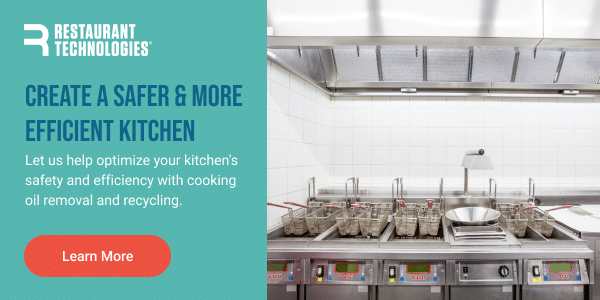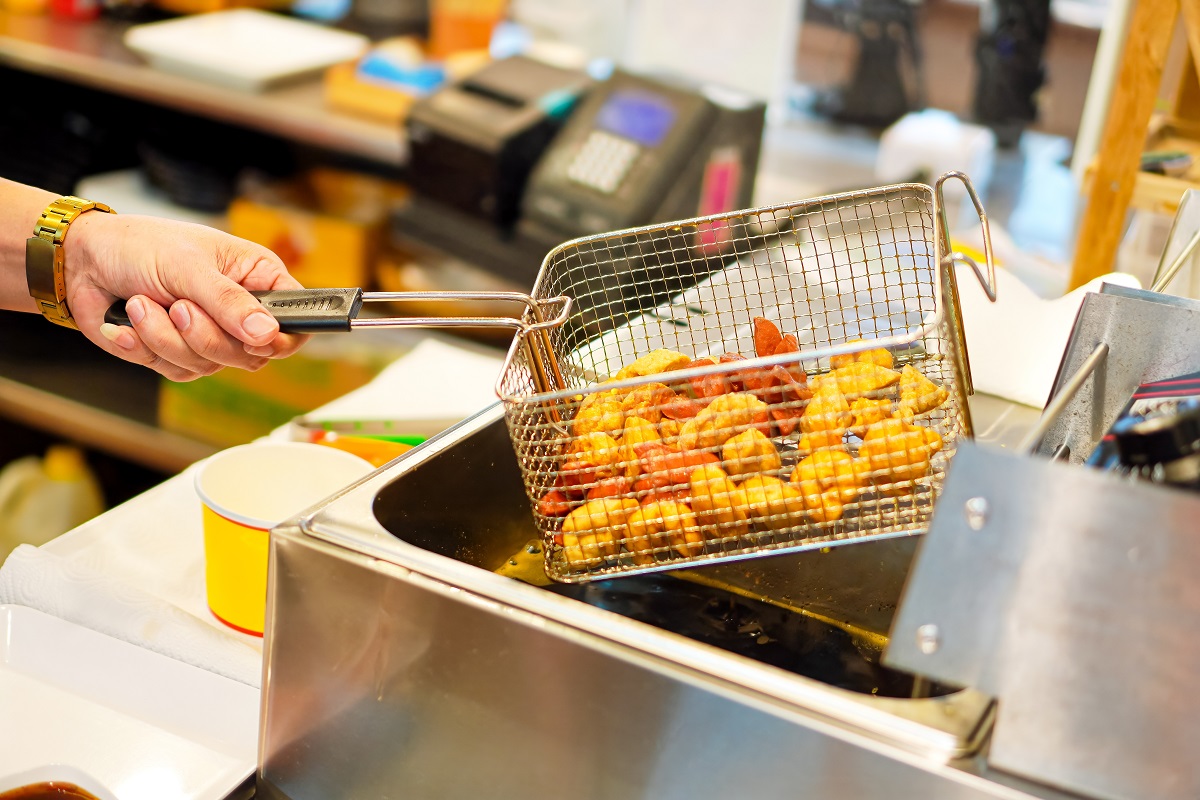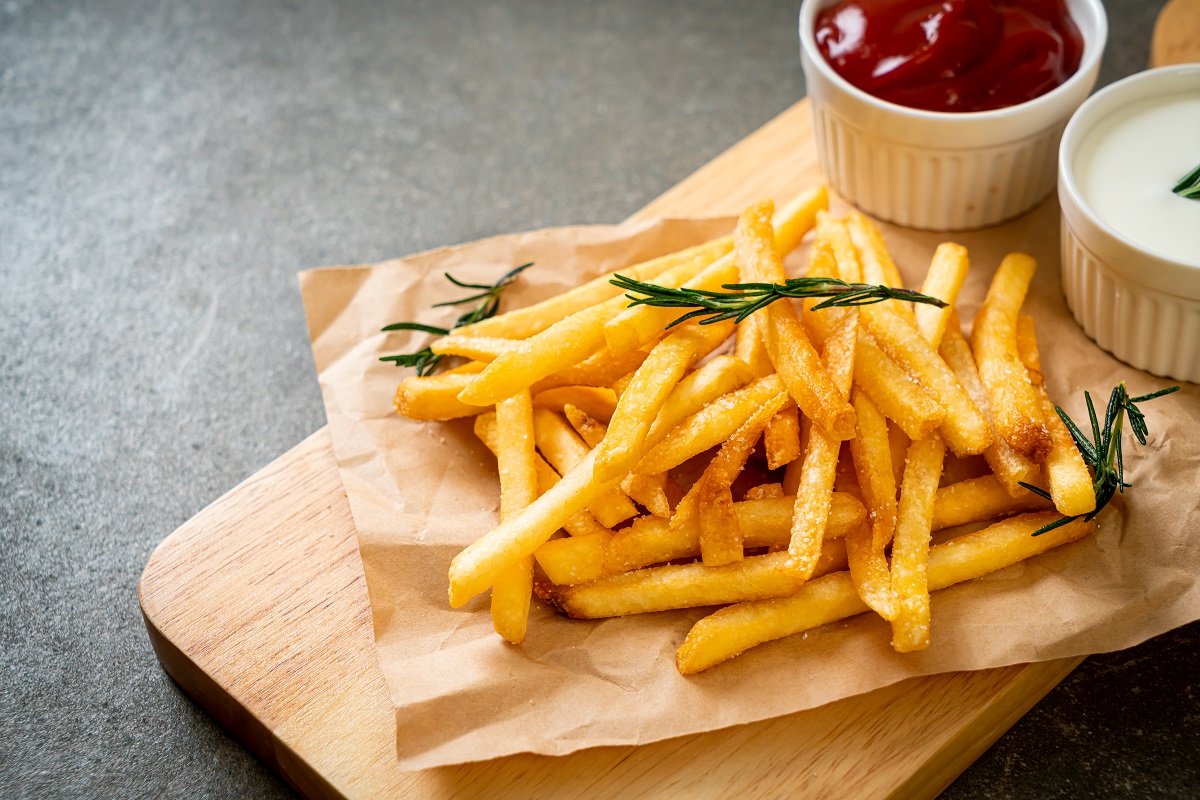This article breaks down how kitchen automation, especially in oil management can help reduce high-risk, low-value tasks and support building a more stable, satisfied back-of-house team.
The Cost of Consistent Turnover in Restaurant Operations
The operational toll of hiring and training churn
Every time a back-of-house employee leaves, your operation pays a price. From job postings and interviews to onboarding and shadowing, turnover costs time and money. According to industry data, it can cost more than $5,800 to replace a single hourly restaurant employee, and that’s not even counting the productivity losses during training.1
Add in a labor market where cooks and dishwashers can leave for slightly higher pay down the street, and you’re left with constant churn that can disrupt workflow and team cohesion.
How turnover affects food quality, service speed, and team morale
When a kitchen is short-staffed or full of new hires still learning the ropes, it can impact several key areas:
- Food can take longer to prepare
- Orders may be more likely to be incorrect
- Ticket times can creep up
- Tension may rise between the kitchen and front-of-house
Morale potentially dips when veteran staff have to pick up the slack, again. And that resentment may only fuel more departures.
Why retention is harder in back-of-house roles
Back-of-house employees often face tougher working conditions than their front-of-house counterparts. They’re typically dealing with hot oil, slippery floors, long hours on their feet, and demanding pace, all while staying behind the scenes. Back-of-house roles experience high turnover rates on par with front-of-house, but tend to involve more physically demanding and hazardous tasks, which makes retention more challenging when those conditions aren’t addressed.2

Why Back-of-House Roles Can Lead to Burnout
The reality of manual oil handling: burns, spills, and repetitive strain
One of the most dreaded tasks in the kitchen? Handling fryer oil.3
Manually filtering or disposing of used cooking oil typically involves:
- Draining scalding oil from fryers
- Hauling heavy containers to storage areas
- Pouring or pumping used oil into collection bins
It can be physically demanding, time-consuming, and risky. Even when employees follow safety protocols, burns and slips may still happen, often during late-night or post-rush cleanup.4
Least desirable tasks = lowest retention
If you ask your staff which parts of the job they dislike most, oil handling may very likely be near the top. It’s messy. It’s dangerous. And it can often fall to the least experienced or lowest-paid team members.
When a job requires someone to clean hot oil traps or carry heavy containers to a storage bin out back, it’s not just unpleasant, but can be a turnover trigger.
Risk = rising workers comp claims and insurance premiums
Burns and falls from manual oil disposal don’t just hurt your staff. They hurt your bottom line. A single workplace injury can lead to:
- Workers compensation claims
- Lost labor hours
- Higher insurance premiums
- OSHA investigations and citations
Reducing those risks isn’t just good safety policy. It’s a smart financial decision.
How Kitchen Automation Can Help Improve Staff Experience
Eliminate the worst tasks: oil handling, lifting, and late-night disposal
Automated oil management systems remove the manual steps from one of the most hazardous jobs in the kitchen. With a closed-loop system, oil flows directly from the fryer to a containment tank, with the push of a button. No lifting. No spills. No burns.
Fresh oil is added automatically, and used oil is safely stored in a sealed container, ready for pickup.
By removing this task, operators can eliminate a major source of stress and injury from the kitchen.
Create a cleaner, safer, and more consistent environment
Automation doesn’t just minimize labor but it can also eliminate mess. Without oil drips on the floor or awkward container transfers, the kitchen stays cleaner and safer.
The result?
- Fewer slip-and-fall hazards
- Cleaner equipment and floors
- Less cross-contamination risk
- Higher staff morale
Even more, automation helps reduce variability. When fryers are cleaned on a schedule and oil is filtered consistently, food quality typically goes up and training can become easier.
Real Results from Restaurant Teams Using Automation
Case study insights: before and after implementing automated oil management
Many brands have seen firsthand how automation transforms operations. In one national chain, managers reported a 30% reduction in oil5 costs and a significant drop in oil-related injuries within the first year of implementation.
Another fast-casual concept saw a sharp improvement in employee satisfaction after automating oil disposal. Line cooks noted they felt safer and more respected, while managers spent less time mediating equipment complaints.6
Managerial impact: more time for coaching and customer service
When you can remove messy, manual tasks from the workflow, managers gain back time and bandwidth. Instead of tracking fryer cleanings or dealing with accidents, they can:
- Spend more time on coaching and development
- Focus on improving service and throughput
- Catch potential issues before they escalate
Automation supports managers in being leaders, instead of janitors or injury investigators.
Building Trust and Stability Across Locations
How consistency in tools and processes helps improve morale and trust
Consistency matters from location to location, and automation can help bring standardization to support. Fryers are cleaned efficiently. Oil is filtered on a schedule. Tasks are more clearly defined.
That kind of consistency helps new hires ramp up faster and can make existing employees feel more confident and competent in their roles.
It also shows them that the company values safety and is willing to invest in tools that make their jobs better, not harder.
Reducing turnover by reducing friction
Every time an employee feels unsafe, confused, or overwhelmed, it can impact trust. When those moments pile up, they may start looking for a new job.
But when you can reduce friction in their daily tasks, you can also help increase their likelihood to stay. And that’s what automation can support with; helping to eliminate guesswork, lower stress, and simplify one of the dirtiest jobs in the kitchen.
Final Thoughts: More Than Just Efficiency
Why smart Ops leaders invest in tools that serve both business and team
Automation can serve as a people-saving measure.
By implementing oil management systems that help remove hazards and headaches, you show your team that their safety, time, and dignity matter. That kind of leadership helps build loyalty, improve culture, and set the tone for operational excellence.
Kitchen automation can help improve:
- Staff retention
- Safety metrics
- Food consistency
- Operational costs
All without requiring constant oversight or extra labor.
Getting started with oil automation
If your teams are tired of the mess, injuries, and constant retraining, it might be time to explore oil automation solutions.
Want to see how this works in real kitchens?
Learn how automated oil management works
Curious what kind of results others are seeing?
Explore customer success stories
Sources:
- Decision Logic. The Real Cost of Restaurant Employee Turnover. https://decisionlogic.co/restaurant-employee-turnover-cost/
- 7shifts. Restaurant Turnover Rate: Why it Happens and How to Reduce it. https://www.7shifts.com/blog/restaurant-staff-turnover-and-retention-playbook/
- QSR Magazine. Restaurant Technologies Helps Customers ‘Control the Kitchen Chaos’. https://www.qsrmagazine.com/sponsored_content/restaurant-technologies-helps-customers-control-the-kitchen-chaos/
- World Copper Smith. Kitchen Accidents Statistics. https://www.worldcoppersmith.com/articles/kitchen-accidents-statistics/9.
- Restaurant Technologies. Multi-Customer Case Study. https://www.rti-inc.com/multi-customer-case-study
- Fast Casual. Case Study: Automated Oil Management Solution Reduces Cost, Increases Safety. https://www.fastcasual.com/articles/case-study-automated-oil-management-solution-reduces-costs-increases-safety/







